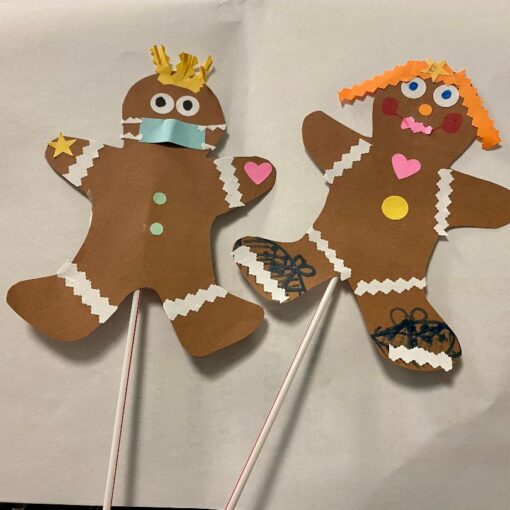Here are some of the rhymes that we like to use in our programs because they help the children pay attention and eventually help to increase the amount of time a child will stay focused on the program. (material c. 2011, Youth Services)
Jumping Joan (chant in rhythm)
(We begin with a pop-up puppet playing peek-a-boo, then ask, “Are you ready to jump with Joan?” As we count slowly to three, the puppet pops out and disappears on each count)
Here I am, little Jumping Joan,
(children jump as librarian and puppet ‘jump’ up and down)
When nobody’s with me, I’m always alone!
(end by sitting and the children will sit)
Why it works: Using the peek-a-boo game instantly gets the attention of even the youngest children. The suspense builds as you count, and the action explodes as everyone jumps and chants the rhyme. An added benefit is that everyone is sitting at the rhyme’s end. Repeating this rhyme two or three times will engage the children enough so that when you are ready to move on to the next one, they are, too. What Follows: Two or three chanting and/or clapping rhymes work well here, followed by a short song or singing rhyme like “Polly put the kettle on” or “Five little ducks.” The song at this point is important because it varies the pace. Look for another post soon about our favorite songs to use in programs!
Two Little Blackbirds (chant in rhythm)
Two Little Blackbirds, sitting on a hill, (hold fists in front of you)
One named Jack, the other named Jill. (hold up one fist at a time)
Fly away, Jack! Fly away, Jill! (flutter fingers as each hand moves behind your back)
Come back, Jack. Come back, Jill. (return to starting position, one hand at a time)
Why it works: It has a catchy rhythm, a simple story line that engages the imagination, and a chance to dramatize the story with hand gestures.
Chook Chook Chook Chook Chook! (chant in rhythm)
Chook, chook, chook, chook, chook! (clap five times in rhythm)
Good morning, Mrs. Hen! (hands out with palms up in greeting)
How many chickens have you got?
Madam, I’ve got ten. (hold up ten fingers)
Four of them are yellow, (hold up four fingers on one hand)
And four of them are brown, (hold up four fingers on the other hand)
And two of them are speckled red, the nicest in the town! (hold up thumbs)
Why it works: The rhythmic clapping sweeps everyone up into its beat, with the added benefit of a simple story line and the use of fingers and counting.
Pease Porridge Hot (clap very rhythmically)
Pease porridge hot! Pease porridge cold! Pease porridge in the pot, nine days old!
Some like it hot! Some like it cold! Some like it in the pot, nine days old!
Why it works: Children get caught up in the beat as they chant and clap in rhythm while the blend of the familiar, e.g., “hot” and “cold,” mixes with the unfamiliar, e.g., “pease porridge,” engaging the imagination.
Humpty Dumpty
Humpty Dumpty sat on the wall, (put one fist on top of the other and bounce gently)
Humpty Dumpty had a great fall, (move hands out and down to the side, crying, “Ahhhh! Crack!)
All the king’s horses, (patter hands against thighs to mimic galloping)
And all the king’s men, (march feet in place to imitate soldiers)
Couldn’t put Humpty together again. (shake head and cross hands back and forth in front with palms down)
Add: “But WE can!” and repeat.
Alternative: Have the children sit on their parent’s lap and “be” Humpty Dumpty. Why it works: The action engages the entire body as well as the imagination. The simple story line involves things that are familiar: a wall, falling, an egg cracking, with some ideas that might be new at first, like horses and marching. There is the satisfaction of having the power that none of the characters in this rhyme story hold: the ability to do it again.
Our Closing Chant
Our hands say thank you with a clap, clap, clap, (clap hands three times)
Our feet say thank you with a tap, tap, tap. (tap feet three times)
Clap, clap, clap. (clap hands three times)
Tap, tap, tap. (tap feet three times)
We roll our hands around and we say, “Goodbye.” (roll hands around and wave)
Why it works: Just as the opening ritual gathers the group together, this rhyme brings everyone together in a satisfying way that involves the whole body with familiar actions. If a child’s attention has wandered near the end of the program, this rhyme brings it back so that we leave as we started, as a nursery rhyme group.



